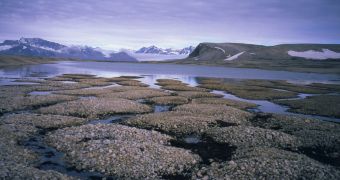With the Doha Summit having just begun, several researchers working with the UN agreed that the time had come for once again stating that all talks concerning climate change and global warming must give due consideration to frozen soils worldwide and their beginning to melt as average temperatures continued to increase.
A report made available to the general public by the UN Environment Programme argues that, according to recent estimates, the permafrost in the planet's northern hemisphere packs roughly 1,700 gigatonnes of carbon.
In case anyone was wondering, this basically means that the frozen soils in the north contain twice as much carbon dioxide as is presently roaming the atmosphere, Business Green explains.
Given the fact that atmospheric carbon dioxide is one of the leading causes of global warming, one need not be a scientist to realize that an increase in its concentrations can only foster ever-more changes in terms of extreme weather manifestations.
The specialists who looked into this issue explain that the link between climate change and a melting permafrost is best described as a “permafrost carbon feedback” loop.
To cut a long story short, warmer weather leads to the frozen soils' releasing the carbon dioxide stored within them. Once it hits the atmosphere, this carbon dioxide ups temperatures even further, something that, in turn, translates into the permafrost’s melting at ever-faster rates.
In the end, it all comes down to a vicious circle that toys with the natural balance of global ecosystems.
According to the same source, specialist Kevin Schaefer, presently working with the University of Colorado, firmly believes that, should things continue to unfold in this manner, 39% of the global greenhouse gas emissions could sooner or later come from the melting permafrost alone.
“Anthropogenic emissions' targets in the climate change treaty need to account for these emissions or we risk overshooting the 2 degrees Celsius maximum warming target,” Kevin Schaefer wished to emphasize.

 14 DAY TRIAL //
14 DAY TRIAL //